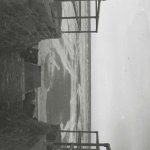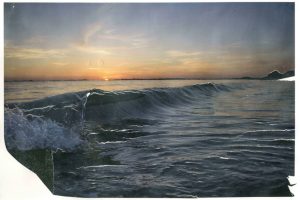3rd Shoot (Results)
This is the results of the final images exactly as I got them back from the developers. There is an amazing range of different colours that came out from the images. The first 6 are bleached from the pool water, then next are mostly unaltered with some discolouration except for frame 7 that suffered the effects of the sea water a little, I found out that the salt water solutions caused the different coloured layers of the emulsion to separate from each other giving these big blocks of colour. Frames 13-18 were kept in the water from the desalination plant, the layer separation here was much more pronounced and produced the incredible colour blocks on frame 18. 19-24 were from St. Catherine’s Woods, this water was fresh and relatively clean but in the first two frames of this set the emulsion begins to crack and break apart, the results of this if it had been left can be seen in the last set of six images. 25-30 are the results of the water damage from Queen’s Valley reservoir, these are the least damaged but they do have some discolouration and frame 25 is just beginning to crack. The final set of frames are easily the most damaged, this surprised me because they were suspended in the tap water, I assumed that this one would damage the negatives the least and I was very wrong, the cracking produced some incredible results, the remaining parts of the image are just visible and are framed by the broken areas. I am so happy with how these final few images turned out.
The way that the environment was able to affect the image in these different ways is fantastic. The results are better than I expected and I am really happy with them.
The other experiment that I tried was to submerge 6 prints in the same types of water, this was mostly an insurance incase the negatives were not damaged by the water. These look really interesting and I have mounted them as an experiment. I only mounted 4 because the other two were not very interesting, I used foam board pieces to keep them off the back piece so that the crumpled, water damaged nature of them still exists. The also still have a tactile nature to them, this tactility gives the viewer a connection to the environment and will make them think about the process over the image itself.












































